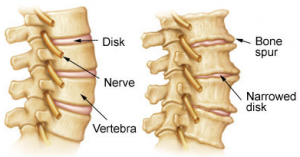Sport Rehabilitation and Physiotherapy for Cervical Spondylosis
What is Cervical Spondylosis?
It is greater than normal age-related degenerative changes of the bones and soft tissues of the spine. Most commonly, the ligaments and capsules around the joint degenerate and become fibrotic. The facet joints between and behind adjacent vertebrae become worn and can develop bony growths (osteophytes) that cause a narrowing (stenosis) of nerve roots. The discs may bulge, protrude and possibly fragment.
What are the symptoms of Cervical Spondylosis?
Neck pain with limited range of movement are the most common symptoms, though other symptoms may include; muscle spasms, stiffness (worse in the morning), headaches, shoulder pain, arm pain, altered posture (poking chin) and in severe cases weakness or numbness into the upper limb, though milder symptoms are much more common. Typically extending backwards and toward the painful side is most painful.
What treatments are most commonly used for Cervical Spondylosis?
 Massage – Encompassing a variety of techniques and is given with sufficient pressure through the superficial tissue to reach the deep lying structures. It is used to increase blood flow, decrease swelling, reduce muscle spasm and promote normal tissue repair.
Massage – Encompassing a variety of techniques and is given with sufficient pressure through the superficial tissue to reach the deep lying structures. It is used to increase blood flow, decrease swelling, reduce muscle spasm and promote normal tissue repair.
Mobilisation – Is a manual technique where the joint and soft tissues are gently moved by the therapist to restore normal range, lubricate joint surfaces, and relieve pain.
Manipulation – Is a high speed, short movement thrust given at the end of available range. It is used to break down adhesions, remove a blockage within a joint and restore full painless movement. A click or noise may be experienced during this treatment.
Ultrasonic therapy – Transmits sound waves through the tissues, stimulating the body’s chemical reactions and therefore healing process, just as shaking a test tube in the laboratory speeds up a chemical reaction.
Interferential therapy – Introduces a small electrical current into the tissues and can be used at varying frequencies for differing treatment effects. E.g. pain relief, muscle or nerve stimulation, promoting blood flow and reducing inflammation.
What other treatments could be used for Cervical Spondylosis?
Acupuncture – An oriental technique of introducing needles into the skin to increase or decrease energy flow to promote pain relief and healing.
What can you do yourself to help Cervical Spondylosis?
A firm supporting pillow – Seems to help some people when sleeping but may aggravate others.
Keep active – If you rest for too long, it will cause the neck to “stiffen up”, which may exacerbate the symptoms.
Exercise programme – This is the most important part of the rehabilitation. Your therapist will instruct you as to which exercises to begin with, when to add the others, as well as how to progress the exercises.
Medication – Ask your GP or Pharmacist for advice on the best medication for your condition.
Heat packs– The application of a hot pack may be beneficial in helping the muscles to relax, promote blood flow to the area and provide pain relief.
Posture – Good posture enables the muscles of the spine to act as a supporting structure and decrease strain on the spinal joints.
Ergonomics – Ensure all your seating is encouraging good posture and your mattress is supporting your spine adequately.
What if treatment does not help or resolve Cervical Spondylosis?
It is very rare that therapy does not give great benefit and in these cases you may need to be referred on for further investigation.
If you think you may have this condition, we would love the opportunity to show you our expertise in the treatment and management of this condition so – Please click here for details of how to contact us to book an appointment
If you are unsure whether you have this condition or you would just like to speak to somebody, then please get in touch here or call 0161 745 7551.


